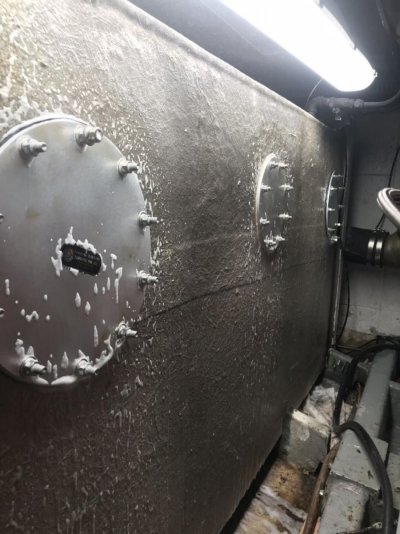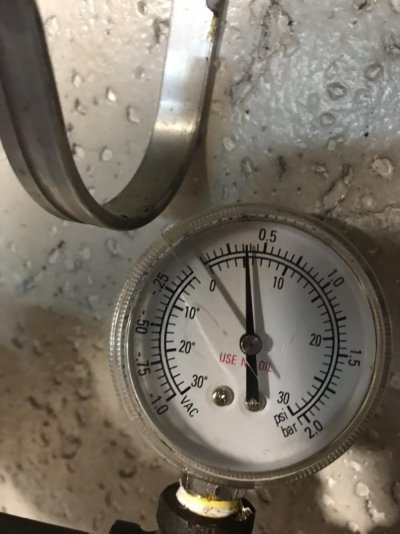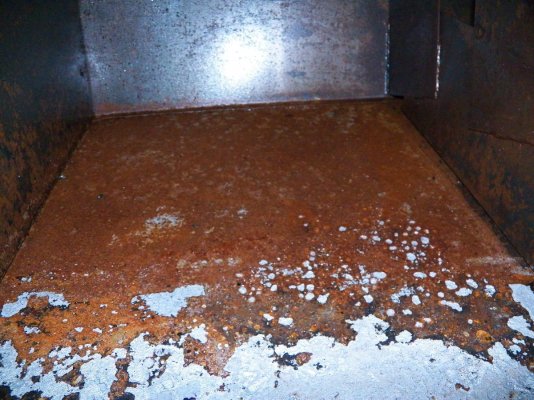I just went through this, although I didn't bother to find out exactly where my tank was leaking, other than to make sure that it wasn't leaking at a fitting that could be repaired. The look of William's tank is the same as mine and probably the same construction. Fiberglass over steel. Apparently the idea was that the layer of fiberglass would keep the exterior from rusting and the diesel would keep the insides from rusting. Seems to work for about 40 years.
My tanks are so close to the hull that I could barely get my fingers underneath. But were I could, I could tell that the thin layer of fiberglass had delaminated. If I pushed up, the layer would oilcan and leak out somewhere, although the tank itself was sufficiently stiff that it didn't flex. This would squirt out the diesel in the fiberglass "blister." It might then take a day or two to fill the blister back up with diesel from the pinhole leak in the tank. No leaking for two days and then leaking again. Grrrr. It would also have been possible to pressure test the tank and have any bubbles or leakage hidden under the veneer of fiberglass.
I didn't have inspection ports in mine and felt that this was a project for a professional, or at least somebody with experience. If I had already had three 8" inspection ports, one in each tank section, I might have tried coating it myself. The only remaining difficulty in a DIY job is cleaning out the tank. I hired a guy who had a steam cleaner, a wet shop vacuum, and a helper. He ran them all at once and cleaned out the tank in about 30 minutes. Best part of that was he hauled the goop (and there will be goop) off to the hazmat site. That was included and took some of the sting out of the $2,800 price tag.
Since the entire bottom and up the sides 6" was coated, I don't know and don't care where the hole was. That reminds me of the scariest part. Before he put in the coating he whanged on the bottom of the tank with a steel marlinspike. He said that there was no point to coating a tank that he could punch through. My tank passed the test.
Now the question is do I bite the bullet and have the other tank done?
Good luck.









